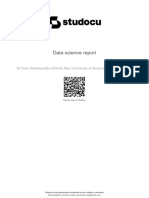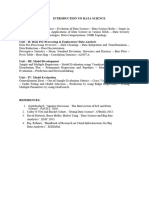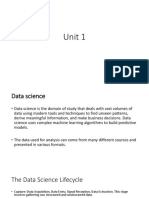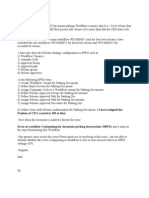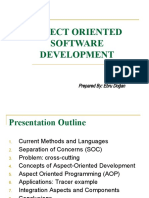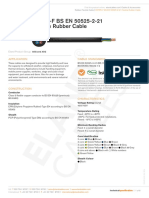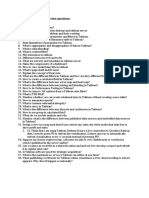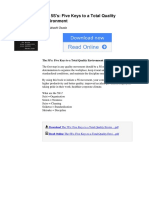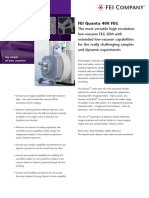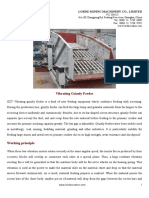0% found this document useful (0 votes)
53 views14 pagesData Science
This document provides an introduction and overview of the key concepts and steps involved in data science, from collecting and managing data to building models and deploying solutions. It discusses the roles of data engineers, analysts, scientists, and how exploratory analysis, visualization, preprocessing, and mathematical modeling are used to turn data into knowledge. Requirements for working in data science such as programming skills, mathematics, machine learning expertise, and experience with data analytics tools are also outlined.
Uploaded by
scientist01234Copyright
© © All Rights Reserved
We take content rights seriously. If you suspect this is your content, claim it here.
Available Formats
Download as PDF, TXT or read online on Scribd
0% found this document useful (0 votes)
53 views14 pagesData Science
This document provides an introduction and overview of the key concepts and steps involved in data science, from collecting and managing data to building models and deploying solutions. It discusses the roles of data engineers, analysts, scientists, and how exploratory analysis, visualization, preprocessing, and mathematical modeling are used to turn data into knowledge. Requirements for working in data science such as programming skills, mathematics, machine learning expertise, and experience with data analytics tools are also outlined.
Uploaded by
scientist01234Copyright
© © All Rights Reserved
We take content rights seriously. If you suspect this is your content, claim it here.
Available Formats
Download as PDF, TXT or read online on Scribd
/ 14


























